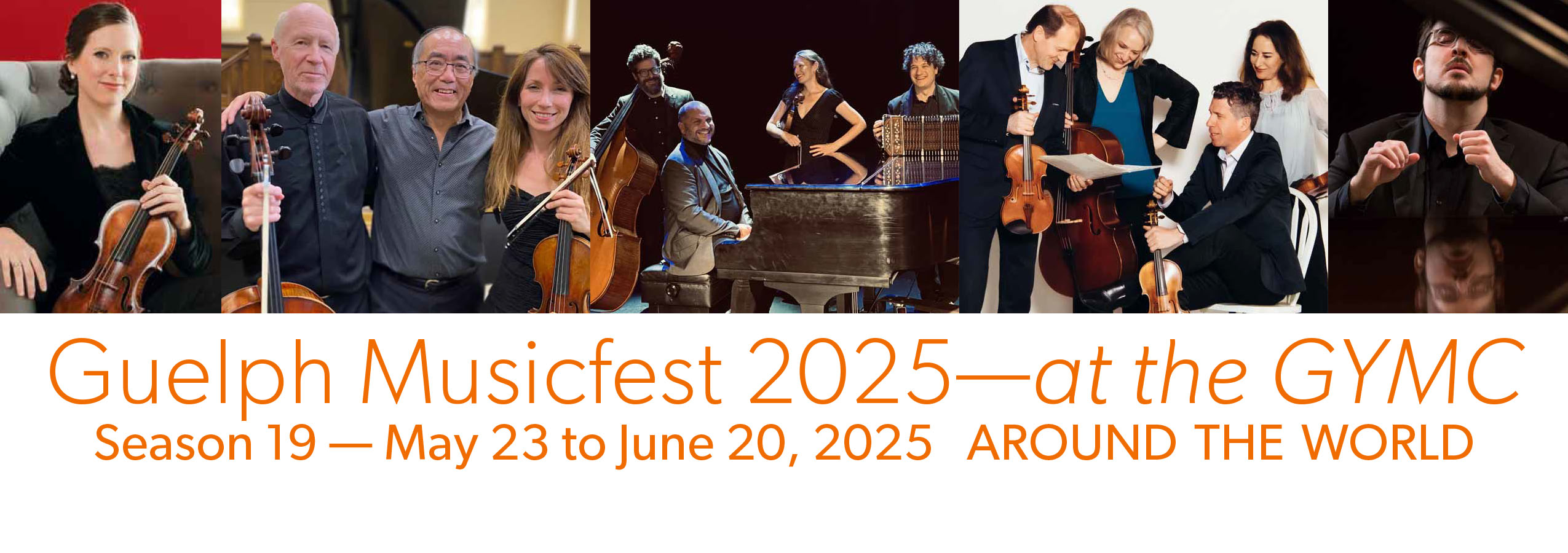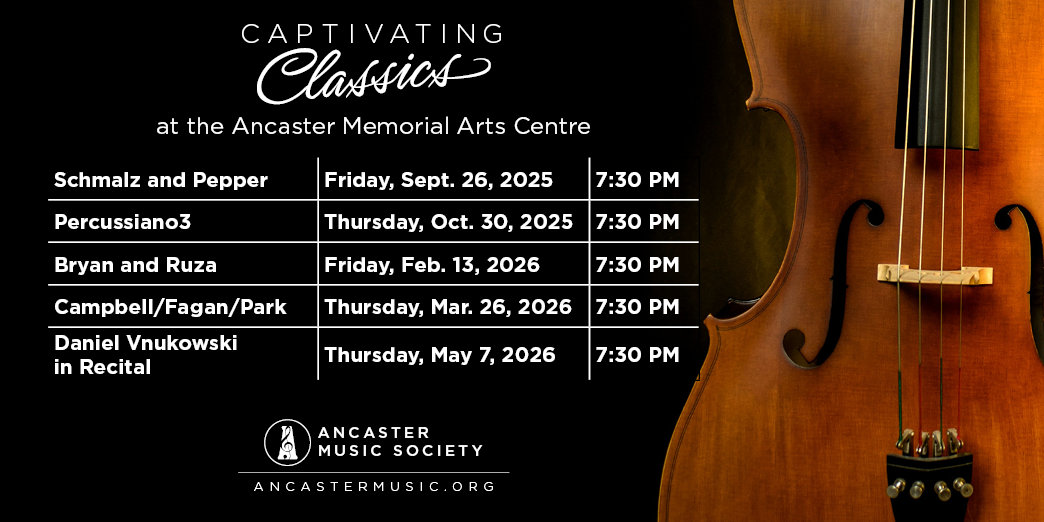October 25 Zemlinsky Quartet
Program notes
This evening’s quartet program is a panorama of passion, searching, and celebration—a journey through three masterworks whose stories intertwine human drama, psychological nuance, and the vastness of new worlds.
Beethoven: Quartet in f minor, Op. 95 “Serioso”
The recital opens in the eye of a storm, with Beethoven’s fiercely compact Quartet in f minor, written in 1810 and bearing the rare subtitle “Serioso.” This is Beethoven at his most urgent—four movements compressed into under twenty minutes, each gesture tightly wound but bursting with intensity. The opening bars strike with unison aggression: the four instruments speak as one, launching a downward motif that sets the work’s turbulent mood. Beethoven was writing during a time of war and personal turmoil; this quartet, possibly intended only for friends rather than public concert halls, reflects a private reckoning with struggle and resilience.
Yet its “serioso” mood is not unrelenting darkness. Beethoven interrupts severity with flashes of lyric beauty, especially in the dreamy second movement, where the cello rises in song and the ensemble whispers consolation amid restless rhythms. The scherzo pounces and retreats, its syncopations taut with suspense. In the finale, Beethoven famously shatters expectations: after drama and dissonance, a mischievous theme dances in, transforming gloom into a burst of wit and energy. In these final moments, shadows lift, as though Beethoven is revealing both the power and redemptive humour that come from facing adversity head-on.
Janáček: Quartet No. 1 (“Kreutzer Sonata”)
The program turns inward, swirling into the psychological labyrinth of Leoš Janáček’s Quartet No. 1, subtitled “Kreutzer Sonata,” composed in a fit of inspiration in 1923. Janáček, then almost 70, found his muse in Tolstoy’s novella—a tale of jealousy, obsession, and the dangerous electricity of music itself. He wrote, “I was imagining a poor woman, tormented and run down, just like the one Tolstoy describes.” The quartet is not a literal retelling, but the music breathes with drama: fragmentary motifs and impassioned outbursts evoke inner monologues, moments of anguish, desire, and fleeting joy.
Janáček layers the quartet with symbolic rhythms—a recurring ostinato suggests the train that carries Tolstoy’s doomed characters, while interrupted dance fragments conjure distorted reality. Glissandi and abrupt tempo changes paint volatile emotions. Particularly striking is the third movement: a duet draws on Beethoven’s Kreutzer Sonata itself, linking Janáček and Beethoven through the theme of music’s power to kindle ecstasy and tragedy. The piece is restless, elastic, refusing classical conventions: themes flare up and vanish; harmonic colours shift like the inner weather of a troubled mind. The closing movement gathers threads from throughout the quartet, pulsing towards a cathartic finish—a resolution tinged with resignation and exhaustion, as if the drama has spent itself and left only quiet reflection.
Dvořák: Quartet No. 12 in F major, Op. 96 “American”
After Beethoven’s storm and Janáček’s confessional drama, the American Quartet of Antonín Dvořák opens the windows wide, bathing the hall in the golden light of summer in Iowa. Composed in 1893 while Dvořák was living among Czech immigrants in Spillville, this quartet is suffused with the optimism, expansiveness, and melodic invention that define Dvořák’s American period.
Fascinated by the songs of Native Americans and African Americans, Dvořák infused this work with pentatonic scales and syncopated rhythms, evoking the spirit of new musical landscapes while remaining true to his Bohemian roots. The viola introduces a warm, arching melody in the first movement, answered by the violin in gentle conversation; the slow movement sings a “Bohemian blues,” tender and radiant in its nostalgia. The scherzo’s lively rhythms and birdsong—Dvořák claimed to mimic the call of a local Scarlet Tanager—fill the music with outdoor exuberance. The finale leaps forward with unstoppable energy, blending hymn-like themes and rustic dances until the work concludes in jubilant unity.
Though written continents away from his homeland, the American Quartet is both international and intimate—a celebration of new experiences, yet imbued with the longing for home that echoes through all great journeys. Its transparency and light—reflecting Dvořák’s happiness amid the wide, open countryside—make this work not merely a masterpiece of chamber music but a heartfelt letter from one world to another.
Across these three quartets, tonight’s music moves us through the tempests of human feeling, the labyrinth of the mind, and the bright promise of new horizons—reminding us of the string quartet’s power to be both a mirror and a guide for our own inner adventures.
Beethoven: Quartet in f minor, Op. 95 “Serioso”
The recital opens in the eye of a storm, with Beethoven’s fiercely compact Quartet in f minor, written in 1810 and bearing the rare subtitle “Serioso.” This is Beethoven at his most urgent—four movements compressed into under twenty minutes, each gesture tightly wound but bursting with intensity. The opening bars strike with unison aggression: the four instruments speak as one, launching a downward motif that sets the work’s turbulent mood. Beethoven was writing during a time of war and personal turmoil; this quartet, possibly intended only for friends rather than public concert halls, reflects a private reckoning with struggle and resilience.
Yet its “serioso” mood is not unrelenting darkness. Beethoven interrupts severity with flashes of lyric beauty, especially in the dreamy second movement, where the cello rises in song and the ensemble whispers consolation amid restless rhythms. The scherzo pounces and retreats, its syncopations taut with suspense. In the finale, Beethoven famously shatters expectations: after drama and dissonance, a mischievous theme dances in, transforming gloom into a burst of wit and energy. In these final moments, shadows lift, as though Beethoven is revealing both the power and redemptive humour that come from facing adversity head-on.
Janáček: Quartet No. 1 (“Kreutzer Sonata”)
The program turns inward, swirling into the psychological labyrinth of Leoš Janáček’s Quartet No. 1, subtitled “Kreutzer Sonata,” composed in a fit of inspiration in 1923. Janáček, then almost 70, found his muse in Tolstoy’s novella—a tale of jealousy, obsession, and the dangerous electricity of music itself. He wrote, “I was imagining a poor woman, tormented and run down, just like the one Tolstoy describes.” The quartet is not a literal retelling, but the music breathes with drama: fragmentary motifs and impassioned outbursts evoke inner monologues, moments of anguish, desire, and fleeting joy.
Janáček layers the quartet with symbolic rhythms—a recurring ostinato suggests the train that carries Tolstoy’s doomed characters, while interrupted dance fragments conjure distorted reality. Glissandi and abrupt tempo changes paint volatile emotions. Particularly striking is the third movement: a duet draws on Beethoven’s Kreutzer Sonata itself, linking Janáček and Beethoven through the theme of music’s power to kindle ecstasy and tragedy. The piece is restless, elastic, refusing classical conventions: themes flare up and vanish; harmonic colours shift like the inner weather of a troubled mind. The closing movement gathers threads from throughout the quartet, pulsing towards a cathartic finish—a resolution tinged with resignation and exhaustion, as if the drama has spent itself and left only quiet reflection.
Dvořák: Quartet No. 12 in F major, Op. 96 “American”
After Beethoven’s storm and Janáček’s confessional drama, the American Quartet of Antonín Dvořák opens the windows wide, bathing the hall in the golden light of summer in Iowa. Composed in 1893 while Dvořák was living among Czech immigrants in Spillville, this quartet is suffused with the optimism, expansiveness, and melodic invention that define Dvořák’s American period.
Fascinated by the songs of Native Americans and African Americans, Dvořák infused this work with pentatonic scales and syncopated rhythms, evoking the spirit of new musical landscapes while remaining true to his Bohemian roots. The viola introduces a warm, arching melody in the first movement, answered by the violin in gentle conversation; the slow movement sings a “Bohemian blues,” tender and radiant in its nostalgia. The scherzo’s lively rhythms and birdsong—Dvořák claimed to mimic the call of a local Scarlet Tanager—fill the music with outdoor exuberance. The finale leaps forward with unstoppable energy, blending hymn-like themes and rustic dances until the work concludes in jubilant unity.
Though written continents away from his homeland, the American Quartet is both international and intimate—a celebration of new experiences, yet imbued with the longing for home that echoes through all great journeys. Its transparency and light—reflecting Dvořák’s happiness amid the wide, open countryside—make this work not merely a masterpiece of chamber music but a heartfelt letter from one world to another.
Across these three quartets, tonight’s music moves us through the tempests of human feeling, the labyrinth of the mind, and the bright promise of new horizons—reminding us of the string quartet’s power to be both a mirror and a guide for our own inner adventures.
Guelph Musicfest 2025 is grateful for the generous contributions of many individual supporters.
Follow Guelph Musicfest on Facebook for the latest news and promotions


